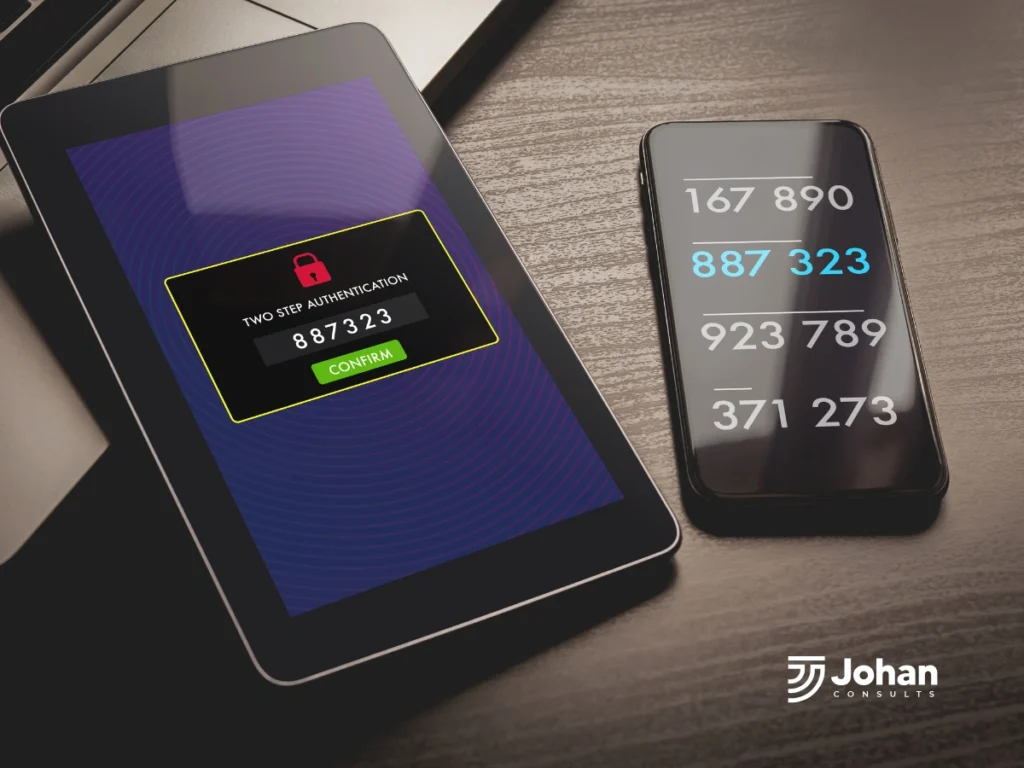Data Protection Laws for Fintech Businesses in Nigeria

Fintech, which stands for financial technology, is really changing the game in the financial services world, including in Nigeria. Nigeria’s fintech industry is one of Africa’s fastest-growing, with innovations in mobile payments like Paga and Opay, digital banking solutions like Kuda and VBank, blockchain technology powering cryptocurrency exchanges like Binance (before regulatory restrictions), and lending platforms like Carbon and FairMoney. However, the fast changes have also brought along some big regulatory challenges. For instance, the rise of digital lending platforms has raised worries about predatory lending practices, whilst the growing popularity of blockchain-based transactions has led to regulatory arguments about cryptocurrency use. As a result, politicians and regulators are always balancing the benefits of innovation against the need for consumer protection, data security, and financial stability. In this article, we’re going to dive into the data protection laws in Nigeria. We’ll take a closer look at the key laws, the regulatory bodies involved, and what fintech companies need to keep in mind when it comes to compliance. Read more about Data security in the banking industry Key Regulatory Framework in Nigerian Fintech Nigeria’s fintech sector is governed by a number of regulatory agencies, each of which focuses on a distinct area of consumer protection, data, and finance law: Key Laws and Regulations: In Nigeria, fintech companies must follow a number of laws and rules, such as the Fintech Law in Nigeria. Compliance Requirements for Fintechs in Nigeria When doing business in Nigeria, fintech companies must abide by the following important compliance requirements: 1. Licensing Requirements The Central Bank of Nigeria (CBN) is the major regulator of financial services, including the fintech sector. You could need to get one of several licenses, such as a Payment Service Bank (PSB) license for basic products or a Payment Service Provider (PSP) license for a wider variety of services, depending on the particulars of your fintech business. You may also need to obtain additional licenses from other regulatory agencies, such the Nigerian Communications Commission (NCC) or the Securities and Exchange Commission (SEC), depending on the size of your business. 2. Anti-Money Laundering (AML) and Know Your Customer (KYC) Compliance Fintech companies play an important role in avoiding money laundering and terrorism financing by adhering to stringent AML and KYC standards. KYC standards require thorough client identification and verification, whereas Client Due Diligence (CDD) entails continuous monitoring of customer actions for any suspect behaviors. Fintech companies are required to notify the Nigerian Financial Intelligence Unit (NFIU) of any suspected illicit behavior. 3. Safeguarding User Privacy: The Nigeria Data Protection Act (NDPA) The NDPA gives individuals more control over their personal data by creating criteria for how fintech businesses gather, retain, and use customer information. Implementing secure data storage procedures, getting explicit and informed user consent, reducing data gathering, and upholding data subjects’ rights are all necessary for NDPA compliance. This complies with data protection laws in Nigeria. Here is an Overview of the Nigeria Data Protection Act. 4. Tax Compliance For fintech businesses operating in Nigeria, registering with the Federal Inland Revenue Service (FIRS) is an essential first step. You can be liable for a number of taxes, including income tax and value-added tax (VAT), depending on your income and business structure. You Can Learn More About How To Get Data Security Certifications That Can Improve Your Career. Core Legal Aspects of Fintech Regulation in Nigeria As Nigeria’s fintech sector continues to expand, regulatory oversight has become essential to ensure stability, security, and consumer trust. Understanding the core legal aspects of fintech regulation is crucial for startups, investors, and stakeholders looking to navigate the complex compliance landscape. 1. Licensing and Compliance In Nigeria, fintech companies that offer financial services need to get the right licenses from the right regulatory bodies. For example, companies that offer payment services need to get a license from the CBN, and those that offer securities-related services need to get a license from the SEC, payment service providers, and mobile money operators. The licensing process has minimum capital requirements, compliance checks, and ongoing adherence to CBN regulations, such as transaction reporting and anti-money laundering (AML) procedures. 2. Digital Lending Regulations Nigeria’s fintech digital lending market is expanding, but it has sparked worries about consumer rights and predatory behavior. In order to address problems like excessive interest rates, a lack of transparency, and unethical debt collecting techniques, the FCCPC recently established laws. Strict rules regarding interest rate caps, fair debt collection, and loan disclosures must now be adhered to by fintech lenders. They must also register with the FCCPC to ensure greater oversight of Fintech laws in Nigeria. 3. Crowdfunding and Investment Regulations Crowdfunding has gained popularity among start-ups and small businesses because it allows them to raise funds directly from the public. Nonetheless, crowdfunding platforms are required by the SEC to register and follow stringent guidelines. The SEC’s framework specifies standards for operators, including transparency, investor protections, fundraising caps, and licensing. In addition to safeguarding investors and eliminating fraud, this will encourage ethical business funding sources. 4. Data Security and Privacy As digital services have grown in popularity, safeguarding financial and personal information has taken precedence. Data Protection Law in Nigeria must be followed by fintech businesses. NITDA’s Data Protection Laws in Nigeria enforce data privacy regulations, requiring fintech companies to safeguard data storage, get user consent, and set up procedures for notifying users of data breaches. Data security is a crucial legal obligation for fintech companies since non-compliance with the NDPR can result in severe penalties. Emerging Trends and Challenges in Fintech Regulation Here are the following trends and challenges in Fintech regulation: 1. Sandbox Regulation and Innovation Hubs The CBN established a regulatory sandbox for fintech firms in an effort to promote responsible innovation. Before a full-scale launch, fintech start-ups can test new products in this controlled environment while being closely monitored by regulators. This methodology facilitates start-ups’ navigation of Nigerian fintech laws while encouraging innovation and maintaining compliance. 2. Evolving Cryptocurrency Regulation Nigeria’s cryptocurrency laws are still being developed. Citing worries about cryptocurrency’s possible use in money laundering and terrorism
8 Best Cybersecurity Firm in Kenya

After a long day at work, you’re all set to wrap things up when suddenly, you get this urgent email letting you know that your company data has been hacked. This means all your customer info, financial records, and internal documents got hacked. This isn’t just a nightmare situation—it happens to Kenyan companies every day. Cybercriminals aren’t slowing down; the more sophisticated their attacks become, the more vulnerable companies are. The worst part is that many companies only take cybersecurity seriously after they’ve been hit, and the damage is already done. The good news now is that you don’t have to wait for bad things to happen. Let’s explore the top cybersecurity firms in Kenya and why they are on this list. Importance of Cyber Security for Businesses Cybersecurity is simply the defense of a device and service against electronic attacks. These attacks often come from unknown sources, such as spammers, hackers, and cybercriminals. One aspect of today’s digital advancement is that cybersecurity can not be ignored. Any single attempt at a security breach will result in the loss of millions of people’s personal information. Also, when these breaches occur, they have a strong financial impact on companies, which causes customers to lose their trust. Cybersecurity is very important in protecting individuals and businesses from cybercriminals. Learn more about The Importance of Data Security Cyber Security Threats in Kenya Cyber attacks have been on the rise in Kenya, which has had a major effect on corporate operations and damaged client trust in several organizations. Companies of all sizes are at considerable risk from ransomware, cyberterrorism, denial-of-service attacks, malware, and phishing scams. The gravity of the matter is highlighted by a recent report from Kenya’s Communications Authority, which found that in just three months of 2024, over 800 million cyber threat incidents were recorded. The nation is actively attempting to improve its cybersecurity framework, though, and companies are being encouraged to take preventative steps like multi-factor authentication, stronger firewalls, and cybersecurity training for staff. Companies can secure their operations, preserve consumer data, and restore trust in the digital sphere by keeping up with these risks and putting strong defenses in place. Having talked about the importance of cybersecurity and the cyber threats in Kenya. Let’s take a look at some of the best companies that can help you protect your digital assets from loss, misuse, and people who shouldn’t have access to them. Best Cyber Security Companies in Kenya Kenya has some great cybersecurity firms that are well-known for their skills and dedication to doing a fantastic job. These companies use the latest technology and top industry practices to provide complete cybersecurity solutions that are customized for the unique needs of businesses and individuals. Let’s take a look at some of the most innovative and leading companies in cybersecurity services: 1. Johan Consults Let us start with one of the leading best cybersecurity in Kenya: Johan Consults, why? Johan Consults has a track record of helping businesses and people deal with cyber threats using their advanced and up-to-date security solutions. Another thing that gives the company the position of one of the leading cybersecurity firms in Kenya is that they have advanced threat detection, penetration testing, and cybersecurity training to secure sensitive data and digital infrastructure. Also, Johan Consults trains organizations and their workers on how to prevent financial losses and data breaches by offering risk assessments and compliance support. Click here to join our training institute. 2. Crystal Tech Ltd Another best cybersecurity firm in Kenya is Crystal Technologies Limited. They known as one of the top tech companies in Kenya. They offer managed services, network security, vulnerability assessments, penetration testing, and incident response to companies for total safety solutions. Also, the company puts security first when making its software solutions, payment connection services, and custom mobile apps. They also offer digital storage, server installation, and maintenance services that prioritize top-notch security standards. 3. Serianu Limited Serianu is a highly respected cybersecurity and business consulting firm making a significant impact across Africa. As a leader in cybersecurity, they help organizations protect their information assets from cyber threats while also optimizing their digital security strategies. Their expertise enables businesses to minimize financial risks, prevent data breaches, and enhance overall cybersecurity resilience. By offering tailored solutions, Serianu not only helps companies save money but also empowers them to uncover new growth opportunities in a secure digital environment. With offices in Kenya, Ethiopia, Ghana, Uganda, Nigeria, and beyond, they are committed to strengthening cybersecurity across the continent. 4. Smart People Africa Limited Another cybersecurity firm in Kenya is Smart People Africa Limited. They are a cybersecurity consultancy company that provides top-notch solutions to protect your digital assets. Their firm is capable of handling threat detection, prevention, incidents, and recovery with the help of their strong cybersecurity staff. And they also focus on an effective approach to help your organization stand strong against cyber threats. 5. Enovise Cybersecurity Services & Solutions Another firm on the list is Enovise Kenya, well-known for its cybersecurity services and solutions. They help governments, financial institutions, and telecoms to secure their network infrastructure from cyber threats. Also, they’ve got a team of skilled pros who hustle to keep up with the latest trends. And being able to spot and tackle data vulnerabilities before they catch the eye of cyber attackers. 6. Magtech Solutions Another top cybersecurity firm in Kenya is Magtech Solutions. Magtech Solutions has been among Kenya’s leading cybersecurity companies for over 20 years, helping businesses become more productive, flexible, efficient, and safe. The company is based in Nairobi and works with the biggest brands to provide high-quality services. They have a team of highly skilled workers, including advisors, cloud solutions developers, network engineers, and security trainers. 7. Techmax Solutions Ltd Techmax Solutions is a recognized cyber security consultancy company in Kenya. They focus on offering top-notch cyber threat mitigation solutions to companies in the East African region. Techmax has made a name for itself in the industry with all the experience it brings to the table. They offer data encryption,
Why Businesses Need Multi-Factor Authentication During This Festivity

The buzzings that come with holidays and festive periods are not limited to physical spaces, they also extend to the online space. There is usually an increase in online shopping and trends which result in a rise in online fraud this season. Cybercriminals leverage this to hack businesses, leaving customers’ data at risk. This is why and where businesses need Multi-Factor Authentication (MFA) during the festive period. What is Multi-Factor Authentication or MFA? MFA is a method of cyber security that requires that users provide more information besides their password or username before they can access their digital accounts or systems. It is also referred to as Two-Step Verification or 2FA. This method is put in place to keep your account still safe even when hackers have discovered your username or password. An example of an MFA is what you encounter when you try to sign into one of your accounts on a new device. You are then asked to prove your identity by providing additional information like a code that will be sent to your phone or a biometric scan. 5 Reasons Why Businesses Need MFA/2FA As an online business owner, data protection should be one of your topmost priorities. This isn’t just as it concerns your business but also your customers. Moreover, Microsoft says more than 99.9% of cyber attacks can be averted by MFA. Let’s then examine some of the benefits of MFA/2FA to your business. 1. Fortifies Customer’s Security Since MFA requires that customers provide details that are more personal to them, accessing their accounts becomes difficult for cybercriminals. Even when the first factor (login detail) fails, the second or third factor will still safeguard their accounts. 2. Complies with GDPR & HIPAA Regulations To meet GDPR and HIPAA regulations, you need to prove that your business makes provisions for the safety of your customers’ data and mitigates risk. One of the ways to achieve this is to put security measures like MFA in place. Failure to meet these regulations often results in fines and legal issues. You can check our GDPR Checklist here. You can also learn about NDPR Compliance and Nigeria Data Protection Act. 3. Minimizes Identity Theft, Fraud & Data Breaches On the part of a business owner, MFA significantly reduces the chances of data breaches to a minimum level. Just so you know, the consequences of data breaches could be gross for a business. It can cause loss of reputation, financial loss, and legal liabilities. On the part of your customers, gone are the days when cracking a single password is all that hackers need to carry out fraudulent activities. MFA has made cybercrimes harder to carry out. 4. Builds Trust and Reputation The incorporation of MFA into your business is a guarantee to customers that their data and assets will be safe with you. Even though MFA processes may be daunting to some customers, they will still earn you and your business trust and reliability from them. 5. An Affordable Security Measure Compared to the losses data breaches will cost you, MFA/2FA is cheaper to implement. Whether you are a small, medium, or large-scale business, MFA is an effective and inexpensive solution to security worries. You will then have the time to focus on growth and other important projects. Types of Multi-Factor Authentication There are many ways to implement MFA, but they are broadly categorized into two. The two types of MFA are Adaptive Multi-Factor Authentication and Active Directory Multi-Factor Authentication. 1. Adaptive Multi-Factor Authentication Adaptive Multi-Factor Authentication is a type of MFA that changes the mode of authentication based on the risk involved. This is to say that the more sensitive and risky your level of operation, the more details you have to provide. This is why it is also referred to as risk-based authentication. An example of adaptive multi-factor authentication is when you require only a password to access your bank app, but an additional PIN to transfer funds. 2. Active Directory Multi-Factor Authentication Active Directory Multi-Factor Authentication is a type of MFA owned or introduced by Microsoft. It is widely known and used by many business owners. Examples of Active Directory Multi-Factor Authentication are: 5 Best Multi-Factor Authentication Tools For Your Business There are tons of MFA software on the internet, but we have compiled the five best MFA tools to make your search faster and easier. IBM Verify is an MFA tool known for providing an updated wide range of MFA services. It offers passwordless authentications, TOTP, voice callbacks, email and SMS OTPs, and adaptive authentication. Microsoft Entra ID is a cloud-based identity and access management tool. It is best for SaaS applications, cloud apps, and internal applications. Its MFA methods include Single Sign-On (SSO), OATH tokens, passkeys (FIDO2), and many more. Cisco Duo security is also an MFA access management software with a peculiarity of preventing credential-based security risks. It offers MFA methods like DuoPush, tokens, passwords and biometrics. Cisco secure access also offers adaptive MFA based on users’ location, health and behaviour Okta Adaptive MFA is another tool characterized by securing access to data and apps in a wide range of environments including cloud and mobile. Its MFA methods include physical tokens, biometrics, adaptive MFA, one-time passwords, and many more. LastPass is an MFA tool that manages passwords and provides solutions to authentication problems. Its MFA methods help secure access to online resources, accounts and applications. LastPass also makes provision for a wide range of MFA methods including MFA for VPNs, hardware tokens, biometric verification, and many more. Conclusion: Safeguard Your Business with MFA As businesses navigate the festive period, ensuring the data security of their customers and operations is important. Multi-Factor Authentication (MFA) offers a robust and cost-effective solution to reduce cyber threats and build customer trust. By implementing MFA, you are not only protecting your business but also avoiding data breachesMulti-factor authentication. For expert advice on adopting MFA and other cybersecurity measures tailored to your business, Johan Consults is your trusted partner. With years of experience in providing top-notch security solutions, we specialize in helping businesses like yours stay secure. Visit www.johanconsults.com to learn more about how their
How Internet Fraud Impacts Small Businesses and How to Protect Yours

Internet fraud has existed since the start of e-commerce trade in the late 90s. At that time, the person committing the crime uses the identity of a prominent person to fraud big companies. Awareness about internet fraud, data protection and compliance follows almost immediately. The Big companies were all on alert and their guards up. However, the struggles never ended, and now internet fraud is as prominent among small businesses as it is among top firms. A recent study from Accenture, as referenced by the US Small Business Administration, shows that only 43% of cyberattacks target small businesses. So, let’s dig into this. What are the threats of internet fraud? How does internet fraud affect your Small business? Are there strategies on how to protect your small business from internet fraud? Continue reading to get answers to these questions. The Growing Threat of Internet Fraud First off, what is internet fraud? Internet fraud, often called Internet scams, is using online software or services to exploit an individual or company, the victim. Generally, internet fraud covers any form of criminal activity that occurs over the internet. Examples of internet fraud include crimes like identity theft, hacking, phishing, etc. Internet fraud is a punishable offence under several federal laws across different countries. There is EFCC in Nigeria, the Department of Justice in the US, NC4 in Kenya and the Tanzania Communications Regulatory Authority (TCRA). Despite all these regulations, internet fraud is still a growing threat. As businesses, small, mid-sized or big, try to break into the internet for obvious reasons, they are also open to several forms of threats. For instance, there was false news this year about UNICEF running a cash promotion through mobile money in Tanzania, Kenya and Uganda. A Nigerian in the UK also hacked the accounts of several people and real estate businesses, swapped their account details with his and received their money into his account. A US attorney also said, “Case is a stark warning to businesses, particularly small businesses often lacking robust cybersecurity measures.” Internet fraud can specifically affect small businesses in several ways. Importantly, this fraud leads to financial losses and a damaged reputation (a bad scenario for a rising business). The effect of financial losses can lead to operational disruptions and even severe legal consequences to the company. Common Types of Internet Fraud Targeting Small Businesses The first step in winning against the increasing internet fraud against small businesses is to be aware of what you are against. Here are some common types of internet fraud targeting small businesses: Phishing Scams This is a type of online fraud where internet fraudsters use fake emails, websites, sms or even phone calls to trick people into sharing their personal information. For instance, you can receive a call from an unknown source claiming that your business account is having certain issues and they need your attention to fix it. They’ll often tell you not to bother coming to their office and simply provide certain information. This information will then be used to defraud you. You can read about a recent phishing case on Technica. Ransomware Attacks A ransomware attack is another type of internet fraud that is a growing threat among small businesses. Cybercriminals use malicious software to lock a victim’s computer data and ask for a ransom in exchange for their data. According to a survey by Hornet Security for Q3 2024, nearly 56% of all the ransomware attacks impacted small businesses. 1 in 5 of these businesses paid the ransom to recover their data – 22% higher than the average. The reason isn’t far-fetched but most of the small businesses aren’t prepared for the attacks that come with it. Invoice and Payment Fraud Another common type of internet fraud against small businesses is invoice and payment fraud. This is a well-coordinated type of fraud where online scammers defraud a business into paying an invoice into a fake account or completely falsifying the invoice. In 2023, Irish SMEs lost €10 m to invoice and payment fraud. Also in Australia, a small business narrowly escaped being scammed of almost $940,000 by a single payment redirection scam. It is thus very important to always double-check invoices before making payments. Business Email Compromise (BEC) Lastly, we have the BEC. Business Email Compromise is a type of internet fraud where a scammer impersonates a trusted person with a company. This can be a staff or a business partner and the goal is to ask for certain payments or sensitive information. It’s simply leveraging social engineering to gain trust and explore vulnerabilities with a firm. BEC is a serious crime that has cost a lot of people over the years. You can check out what Tripwire has to say about over 55bn lost worldwide in the last 10 years to BEC. How Johan Consults Protects Small Businesses Internet fraud is a dynamic game and is even considered the biggest game of all time, bigger than sport. Thus, someone familiar with the game must help you in winning. At Johan Consults, we have a dedicated team of experienced cybersecurity professionals who can help secure your business against any threats. We are a leading data security firm with operations all over the world. At Johan Consults, we can also help you in training your team to recognize internet fraud tactics. We provide training on GDPR, KDPR, NDPR, ISO, DPO, DPCO and advanced masterclass training. You can read to learn more about ISO training. How do I Protect My Business from Internet Fraud If you are looking for a way to step in yourself, there are a few things you can do. Firstly, you must monitor and audit. It is important to regularly check for any unusual activities. Even when you’re trained to spot certain odd gestures immediately, there is still a need to do regular checks. This will help you spot misappropriations that are just creeping in, lapses from your employees, and oversights. Secondly, in the case of ransomware, you can purchase
Data Leakage Protection: The #1 Overlooked Security Risk

As an organisation, you will gather, process, use, and store data—both consumer data and the enterprise’s own data (financial reports, marketing strategies, employee information, etc.). But you’re at risk of constant data leaks, and a data leakage protection system is important to prevent reputational damage, financial loss, and legal consequences. What is Data Leakage Protection? Data leakage protection is the total cybersecurity processes and technologies used to protect sensitive data and business information from loss, corruption, deletion, and, above all, leakage. Similar to data loss prevention, it’s an all-round cybersecurity measure that ensures organisations keep their data in and simultaneously avert the negative consequences of data compromise. Additionally, data leakage protection (DLP) ensures enterprises maintain compliance with relevant data regulations, e.g., GDPR and NDPA. What Is a Data Leak? A data leak happens when sensitive information is accidentally and unintentionally exposed to unauthorised parties. Data leaks can occur via the internet, physically through devices, or as simple as sending emails to the wrong recipients. Although the term sounds similar to ‘data breach,” where data leaks are usually accidental, data breaches result from malicious intents, especially from the outside. What causes data leaks? Data leaks are commonly caused by poor data security that allows just anyone through, weak or stolen passwords, a lack of employee training, and even physical attacks. But data leaks happen in one of the following ways: Accidental Data Leaks: most data leaks are intentional and occur from mistakes such as sending sensitive mail to the wrong recipient(s). Some happen due to wrong data security settings that usher hackers in. Insider Threats: Like data protection in the fintech industry, insider threats remain a stumbling block to cybersecurity. A current or former employee or contractor with access to sensitive information may decide to leak it for malicious intent. Malicious Attacks: To gain access to sensitive data, cybercriminals use several technologies to attack the organisation’s database. These cyberattacks come in the form of malware, ransomware, and phishing attacks. Once unauthorised access is gained, data exfiltration takes place. Why is Data Leakage Protection Important? It doesn’t matter whether it’s customer details, financial documents, or even business plans; once data lands in the wrong hands, severe consequences follow. First is reputational damage; clients will lose trust in the brand, leading to drawbacks in the order of business. Second, for every occurrence of a data breach, fines and sanctions are imposed by data regulation. Take, for example, when the NDPR fined fidelity bank for a data breach. These setbacks incurred from data leaks and breaches destroy business deals and jeopardize more opportunities for the victim company. Now, digital transformation makes protecting data difficult; every company prefers remote work, and cloud storage is the main deal now. This puts data security in a delicate situation because these serve as an entrypoint for data breaches. Therefore, businesses must come up with a data leakage protection policy that guards against data loss or leakages. How Does Data Leakage Protection Work? A data leakage protection solution works by scrutinizing the content and context of data moving in, out, and around the organization. It’s an absolute analysis that includes emails and even data sent through text messages. Safe to conclude, a data leakage protection system carries out:Content Analysis: where the solution uses a variety of tools and techniques to ensure the specific content of messages and internet traffic meet the predetermined policies. Context Analysis: the scrutinisation of external factors such as file size and format of a message. Once a data leakage solution senses the data doesn’t meet the set requirements, it prevents such data from leaving the organization. At the same time, it alerts the data security team of a potential data leak or loss. Here are some of the techniques most DLP solutions use: Categorisation: Examines data types to detect sensitive information and prevent potential compliance risks. Exact file matching: compares unique file signatures to identify identical data sets precisely. Partial data matching: identifies complete or partial matches of specific file contents. Statistical analysis: Applies advanced machine learning techniques to automatically detect and flag potential data leak risks. Regular expression matching: scans for specific data patterns like credit card numbers (16 digits), Social Security numbers (9 digits), and other structured information formats. What Are the Features of a Data Leakage Protection (DLP) Solution? Data leakage protection (DLP) solutions are comprised of cybersecurity tools designed to prevent unauthorised data exposure and safeguard sensitive information across an organisation’s system. Here are the 7 key features of an effective Data Leakage Protection (DLP) solution: Benefits of Data Leakage Protection The benefits of a data leakage protection system are numerous and straightforward. Conclusion Data leaks happen unintentionally but they are preventable. Investing in a comprehensive data leakage protection system enables the organisation to curb data loss or leaks. Summarily, the importance of data leakage protection in cybersecurity is immeasurable, as it prevents breaches and boycotts legal penalties from data regulations. Frequently Asked Questions What’s the difference between data leak and data breach? Data leaks are often unintentional and may result from inside the organisation, while data breaches are malicious in nature. What’s the difference between data leakage protection and data loss prevention? Data loss prevention primarily focuses on preventing data from being accidentally or intentionally lost, destroyed, or rendered inaccessible. While Data Leak Protection specifically targets unauthorised data exposure or transmission outside organisational boundaries. What does DLP stand for? DLP may stand for data leak prevention, data leakage prevention, data leak protection, data loss prevention, or data loss protection
Data Loss Prevention (DLP): The Silent Killer of Your Business

The consequences of data loss have never been higher; data must be shielded at all costs. So, this blog provides more information on the prevention of data loss. What is Data Loss Prevention? Data loss prevention (DLP) is the process of detecting and preventing data breaches, exfiltration, and even misuse by using cybersecurity strategies, processes, and technologies. The root of this equation is data; it’s a common factor for all businesses and organisations worldwide. What’s it used for? A typical organisation (business or not) keeps client data—personal, sensitive, etc., for record keeping, transaction processing, marketing, and competitor analysis. Cybercriminals use this data for varying reasons, majorly money-driven. While organisations keep them for ease of business and eventually increased profitability, cybercriminals make money off data through financial frauds, identity thefts, etc. The landscape further worsens with each technological advancement. Now, thousands of authorised users access the company’s database through cloud and on-premises facilities. Therefore, there’s a need to implement strategies to prevent data loss. With DLP, organisations detect data threats faster than usual. How? It tracks data throughout the system and implements security policies on that data. Organisations typically use DLP to: Why is Data Loss Prevention Important? Data is never safe; it doesn’t matter if it’s in use or at rest, making data protection and security complicated. Despite the stress, data loss prevention is the best step. Why? The costs of data loss surpass the technicalities of its prevention. According to the cost of a data breach report by IBM, the average cost of a data breach reached USD 4.88 million, a 10% jump from the previous year. Protecting data, particularly personal identifiable information (PII), became more difficult because data may be used and stored in several formats in multiple locations across various departments. Therefore, there’s a need to monitor each data point and enforce the necessary policy for it. Given the vulnerable nature of data, an ideal data loss prevention system must be able to monitor data when Types and Causes of Data Loss Data loss is often defined as events of data breaches, data leakages, or data exfiltration. Though used interchangeably, these terms have distinct meanings. Data breach: A data breach is any incident that leads to unauthorised access to data. Under this, we have cyberattacks and other incidents that allow unauthorised access to sensitive information. Data leakage: Like the name leakage, data leakages include accidental exposure of sensitive information to the public. This can occur from procedural security errors from both electronic and online transfers. Data exfiltration: This is any theft where the attacker (hacker) successfully moves stolen data to a device under his control. Data exfiltration cannot occur without a breach or leakage, but not every breach/leakage leads to exfiltration. Since data loss has been defined and categorised, let’s see its causes There are 3 Common Causes of Data Loss Cyberattacks Malicious actors target data all the time—relentlessly. To help their cause, they employ several techniques such as phishing, malware, and ransomware. These are the prevalent types of cyberattacks Insider threats Authorised users, such as staff, third parties, stakeholders, providers, etc., might put data at risk through carelessness and malicious intent even. It’s as simple as not updating passwords or even carelessly revealing sensitive enterprise data, etc. while using public networks. Malicious or not, insider threats remain very costly considering IBM’s report. Smartphone or PC theft An unattended device attracts thieves. It doesn’t matter if the thief pawns off the device; the organisation suffers the cost of cutting the stolen device off and replacing it. On a serious note, such incidents grant malicious users direct access to confidential or sensitive data. Data Loss Prevention Policies One thing about DLP is the wide coverage, from data classification, access control, and encryption standards to technical controls. With data loss prevention policies, the standard is clear: employees know their duties regarding data protection and security. In addition, it allows for proper staff training on data security best practices such as threat identification, data handling, and incidence reporting. Also, rather than a generalised security approach, with DLP, data is classified, and implementing appropriate security protocols for each group becomes easier. For example, handling PII (personally identifiable information), such as credit card numbers, social security numbers, etc., is subject to certain data security regulations. Meanwhile, the company can choose to do whatever with its own intellectual property (IP). These types of data require different security procedures; hence, tailored DLP policies are necessary. The Types of DLP Solutions It’s important to understand the different facets of data loss prevention for better comprehension. There are 3 types of DLP: Network DLP Network DLP solutions monitor how data moves through—in and out—networks. With tools like artificial intelligence (AI) and machine learning, they flag anomalies that signal data loss in a network. Although network DLP solutions monitor data in motion, many check data in use or at rest too. Endpoint DLP Endpoint DLP tools monitor data use activity on laptops, mobile devices, servers, and other devices accessing the network. These solutions are directly installed on the devices and even go the extra mile to block unauthorised data transfers between devices. Cloud DLP Cloud security solutions focus on data stored in and accessed by cloud services. They scan, classify, monitor, and even encode data in cloud repositories. Particularly, these tools help implement access control policies on individual end users and any cloud services that might access company data. How DLP Works DLP is typically a 4-step procedure for many security teams. The steps are:


